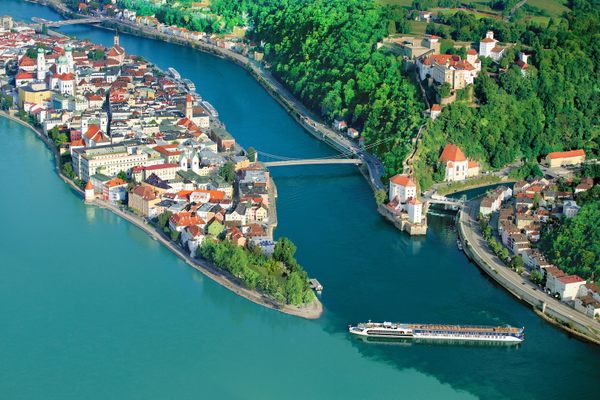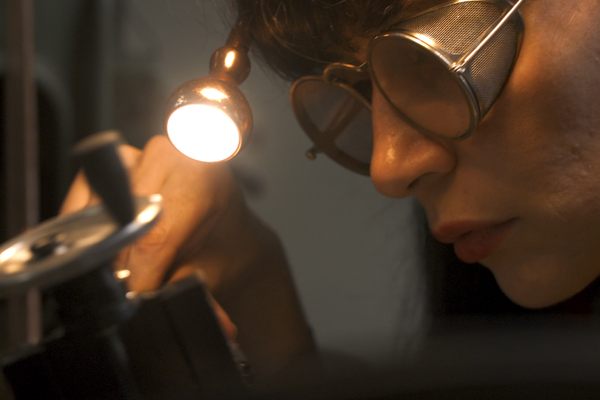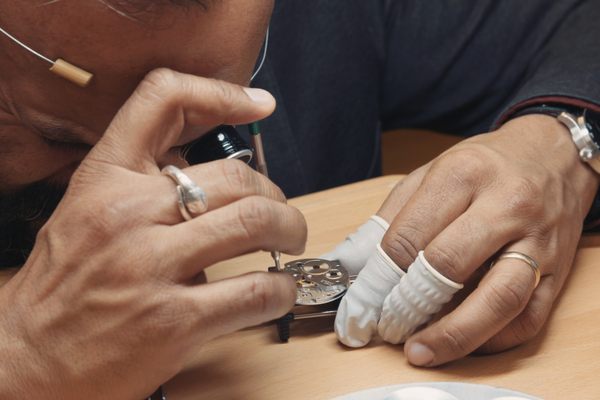
Uncover Hidden Treasures and Surprising History Along the Rhine
Explore a world of antique oddities, marvels of ancient engineering, and monuments to time.
As one of Europe’s major rivers, the Rhine winds its way northward from the Swiss Alps, snaking between France and Germany where it roams among vineyard-covered valleys and medieval castles before passing through the Netherlands. AmaWaterways offers a truly unique cruise that works the river backwards, delving into the engineering marvels that are Amsterdam’s canals and introducing passengers to some of the region’s most intriguing and unusual offerings. From a 14th century astronomical clock to a barrel of the oldest known wine on the planet (which happens to be tucked away beneath a hospital campus) here are 12 spots to experience the Rhine’s hidden wonders, en route from Amsterdam to Basel.
AMSTERDAM, NETHERLANDS
A landscape of tulip fields, windmills, and canals, the country is one of the world’s best protected river deltas, which is why it’s a pro at taming water.

The Canals of Amsterdam
Synonymous with the city, Amsterdam’s canals are a 17th century masterpiece of large-scale urban planning and hydraulic engineering. They’re also a great place for taking pictures, especially along Prinsengracht (the Prince’s Canal), just west of the city center. There are 165 canals—including three main arteries that form concentric half-shapes around the city—in total, transforming what was once largely swampland into a maze of waterways constructed to transport both goods and people, and shaping both the history and culture of this artificial port city in the process. The waterways pass beneath some of Amsterdam’s most iconic bridges, and alongside narrow, stepped gable houses that appear titled and crooked—a result of the marshy soil on which they’re built. Many of these homes still have the cantilevered beam and hook protruding from their top exteriors. Residents use these contraptions to hoist furniture and other bulky objects up through their windows. Take them in from one of AmaWaterways’ special canal cruises, or admire them from land while snacking on Vlaams Friteshuis Vleminckx’s famous fries. Served up in a paper cone with a choice of sauces, these make the perfect waterside treat.
Amsterdam’s Nieuwe Spiegelstraat
You can spend an entire day perusing the many curiosities of Amsterdam’s Nieuwe Spiegelstraat. This multiblock street is lined with over 80 antique shops, each one devoted to a different collection of obscurities. At Nelis Antiques, browse a selection of dental tools, dissection kits, and medical wares. Then head over to Staetshuys Antiquairs, a corner shop brimming with sundials, celestial globes, and nautical instruments. Family-owned Kramer Arts & Antiques is an official dealer of Royal Delft, an iconic type of Dutch earthenware that’s tin-glazed and dates back to the 17th century. Also in stock: antique tiles and collectible KLM houses.
Amsterdam Cheese Museum
The Netherlands is the world’s largest cheese exporter, with a tradition of Dutch cheese-making that dates back more than 600 years. Delve into this palatable history at the Amsterdam Cheese Museum, a two-story space where you’ll learn what makes Gouda cheese a Gouda, and how Maasdam (a nutty cheese named for a village just south of Rotterdam) gets its iconic holes. The ground floor features a special cheese shop with shelves of cheese wheels, complimentary samplings, and vacuum sealed Edams and Beemsters for purchase. Beneath it sits a subterranean museum filled with old cheese-making instruments, such as cheese-curd cutters and even a specialized cheese scale. For a time this museum was also home to one of the world’s most expensive cheese slicers, a silver diamond encrusted cheese slicer worth about $28,000. The tool was mysteriously stolen in 2015, and has never been recovered.
GERMANY
As a border between Germany and France, the Rhine River pushes its way through deep river gorges, bucolic wine valleys, medieval towns, and occasional Roman ruins.

Siegfried’s Mechanical Museum (Rüdesheim am Rhein, Germany)
German collector Siegfried Wendel got the idea for a museum devoted to automated instruments while honeymooning in Los Angeles during the mid-1960s. By the end of the decade, his dream was born. Today, Siegfried’s Mechanical Music Cabinet is one of the largest collections of mechanical instruments in Europe: 400 self-playing, mechanical instruments spanning three centuries. They include the orchestrion, an enormous machine that mimics the sounds of a traditional orchestra (think lutes, violas, and trombones), hand-cranked harmonipan players, wooden gramophones, and a massive fairground organ. It’s housed in the stunning medieval Brömserhof, a 15th-century knight’s manor with vaulted ceilings and fresco-adorned halls. As one of AmaWaterways’ included excursions, guests can embark on one of the museum’s guided tours to see some of the instruments in action.
Rüdesheim Cable Car (Rüdesheim am Rhein, Germany)
Hop aboard a partially enclosed gondola and travel back in time to the idyllic age of Rhine romanticism. Another AmaWaterways included-favorite, this 10-minute ride from the winemaking town of Rüdesheim am Rhein journeys up a steep hillside provides spectacular views of an almost fairytale landscape, one filled with castles, monasteries, vineyards, and towering gorges that became the muse for painters, poets, and writers alike in the 19th century. The nearly mile-long ride ends at the Niederwald Monument, a late 19th century bronze casting commemorating the Unification of Germany in 1871. Germania, the personification of the German nation, stands as its central figure. From here, you’ll also have panoramic vistas that include Rüdesheim’s half-timber houses, the river itself, and the UNESCO-listed Upper Middle Rhine Valley.
Roman Tomb Köln-Weiden (Cologne, Germany)
Several miles west of Cologne sits what is perhaps the best preserved burial chamber north of the Alps. Discovered accidentally in 1843, this final resting place for a wealthy Roman family dates back to the 2nd century. It first opened to the public in 1848, and offers plenty of insight into how prosperous landowners once lived. Inside sits a stone-modeled version of a triclinium, a type of dining table used in ancient Rome with couches along three sides, as well as three perfectly preserved marble busts (two female, one male), which likely represent the landowning family, and a sarcophagus made of Carrara marble. While the chamber closed to visitors for several decades following World War II, it reopened in 2019 after extensive renovations. There’s even a tiny museum highlighting the region’s Roman history.
STRASBOURG, FRANCE
French and German influences mix in the city of Strasbourg, nestled along the Rhine’s left bank only two miles from the German border.

Historic Wine Cellar
Created in 1395 beneath Strasburg Hospital as a place to store wine, grains, and other perishable items, this ancient cellar also happens to be home to the oldest barrel-stored wine in the world. The white wine in this particular 119-gallon barrel, which is marked with the year 1472, has only been tasted three times in history—including once in 1944, following Strasbourg’s liberation during World War II. Wine growers restored the cellar in the 1990s and its walls remain lined with massive, decoratively carved wooden barrels, most of them dating back to the 18th and 19th centuries. The historic barrel sits behind a protected gate, and is part of a small museum that also features a wine press from the early 1600s. Wines produced in the cellar can be purchased in the onsite shop.
Astronomical Clock
Strasbourg Cathedral, which you can visit as part of AmaWaterways included “Gem of the Alsace” tour, is home to an ornate monument to time, crafted by artists, mathematicians, clockmakers, and automaton designers alike. The Strasbourg astronomical clock is the third such mechanism to stand on this spot since the 14th century, following that of a mechanical gilded rooster and a more elaborate piece with paintings, moving sculptures, and musical bells. Built in 1843, this particular incarnation is brimming with impressive features, including an orrery (planetary dial) that displays relative positions and motions of our Solar System’s planets and moons, a 24-hour sundial, and an animated procession of the 12 Apostles, a dozen 18-inch high figures that parade before Christ at 12:30 daily. Below him stands Death, as well as rotating figures representing the four stages of life—from child to elder—representing the inevitable passing of time.
The DNA Rooster
Each day at noon, a rooster crows thrice outside the offices of Les Dernières Nouvelles d’Alsace, or “DNA,” Strasbourg’s daily newspaper. This mechanical bird, made of hundreds of metal feathers, first appeared atop the building’s exterior clock in 1920 to celebrate France’s victory at the end of World War I. Although dismantled and hidden from the Nazi’s during World War II, he returned to his perch with the 1944 liberation of Strasbourg. These days, he even has a friend: a mechanical hen, which sits on its nest right across the narrow street. Since 1991, she’s been laying golden eggs in response to his noon-time calls.
BASEL, SWITZERLAND
Hailed as Switzerland’s cultural capital, Basel is home to 40 museums, a stunning medieval Old Town, and the country’s only cargo port.

Spalentor
Once part of the ancient walls of Basel, Spalentor is often regarded as one of the most stunning gates in Switzerland. City officials constructed the gate in 1356 to help protect Basel from attack, and it’s remained an icon since. The castle-like structure features a square main tower, with round towers flanking it on both sides. You can still view its imposing oak portcullis (a latticed grill meant to close vertically) and a few 15th century sculptures adorning its outward-facing facade, including a Madonna. Although the bulk of Basel’s defense wall was demolished in the 19th century, Spalentor is one of three of the six original gates that remain.
Pharmazie-Historisches Museum der Universität Basel
The history of the pharmacy is on full display here in Basel, home to the largest and most important collections of pharmaceutical artifacts on the planet. Housed in the Haus zum Sessel—where a series of famed printers, including Johann Amerbach, the first printer in Basel to use the Roman type instead of Gothic and Italian, illustrators, and engravers once lived and worked—the Pharmaceutical Historical Museum of Basel features everything from laboratory utensils and outdated pharmaceutical books to 15th century apothecary ceramics and obsolete medicinal remedies, including ancient amulets once used to ward off disease. There’s also an onsite “Herbarium,” a pharmacy where teas, herbs, and other souvenirs are available for purchase.
Münster Reaction Ferry
Once a common sight along the Rhine between the 17th and 19th centuries, reaction ferries are engineless ferries propelled by the river’s current. Basil’s Münster Reaction Ferry is one of four such silent floats still shuttling passengers across the Rhine. Each ferry basically travels along a steel cable joining Grossbasel on the river’s left bank and Kleinbasel on its right, with its captain swinging the boat’s rudder from one side to the other, depending on the direction of travel. The quicker the current, the faster the trip. It’s sustainable public transport at its best.
Sponsored by AmaWaterways. Click here to explore more.



























Follow us on Twitter to get the latest on the world's hidden wonders.
Like us on Facebook to get the latest on the world's hidden wonders.
Follow us on Twitter Like us on Facebook